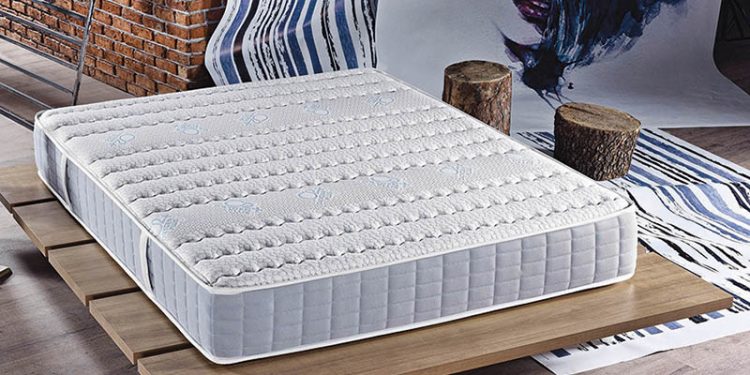People spend an average of 227,760 hours and 26 years of their lives asleep. In today’s world, we spend more time in beds than we did in the past. The biggest factor in the emergence of this situation is the modernization of mattresses compared to the old times. Looking back, how were the beds? What types of beds did the first humans sleep in, or what types of beds did they have to sleep on? When we look at the early periods, we can guess that mattresses were not as modern as they are today. Therefore, people tried to design different mattresses for each period. They chose different mattresses based on their conditions or wishes. Let’s take a look at the use of beds by people living in different periods, the characteristics of the mattresses they used, and the discoveries in mattress production.
Modern humans began to lie on the ground after discovering fire
Before modern humans, chimpanzee-like animal species slept on treetops to protect them from predators. His sleeping habit varied according to an obligation. After the fire was found, this situation changed. After the discovery of fire, wild animals could not get to where the fire was. For this reason, it is thought that the first humans slept on the ground after the invention of fire. At this point, we can reach the roots of the mattress and sleeping habit.
It is said that the oldest known form of a mattress is approximately 77,000 years ago. Discovered by archaeologists from rock shelters in South Africa, this knowledge informs modern people about the mattress shapes of ancient people. These mattresses had natural insect repellent properties to protect people from mosquitoes and insects. It also consisted of some grass and leaves.
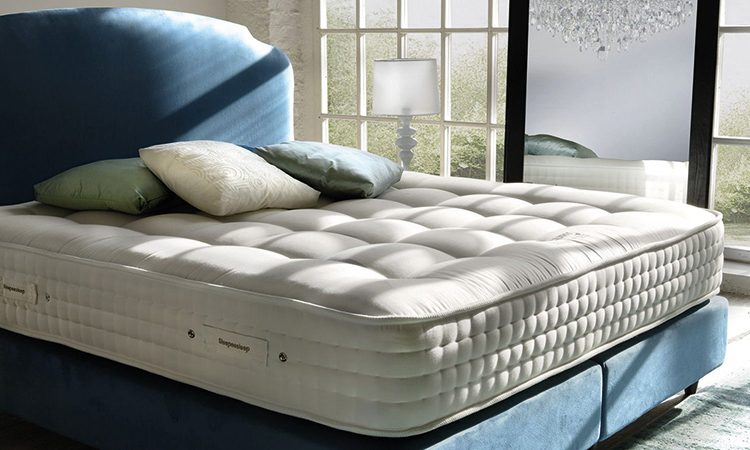
Ancient Egyptians preferred raised and wooden mattresses
Sleep patterns changed drastically between 3000 and 1000 BC as humans and civilizations developed in early history. People preferred raised and wooden mattresses for protection from snakes and rodents in Ancient Egypt. Raised mattresses regulated the temperature and helped protect people from cold and heat. Using this method, people had a more beneficial sleep and a better quality mattress.
After the Egyptians preferred wood trees more, the government allowed wood trees to be imported due to the fact that wooden trees did not grow in the region. Wood was a material used for unpretentious mattresses at that time. Wealthy people of the period used wooden pillows, linen sheets, mattresses decorated with gold, jewelery and ebony for comfort.
Public slept on straw, rich people slept on wool in the Romans
The ancient Romans, like the first people to live in Egypt, put their mattresses on high places. For this reason, they used stairs to reach the mattresses. Most of the Romans’ mattresses were made of wood, metal or ivory. The Romans, who decorated with various dresses and strings, were trying to make their mattresses look better. While mattresses for the people were made of straw, it was different for the wealthy Romans. The wealthy Romans’ mattresses had multiple layers of more luxurious materials such as wool or feathers.
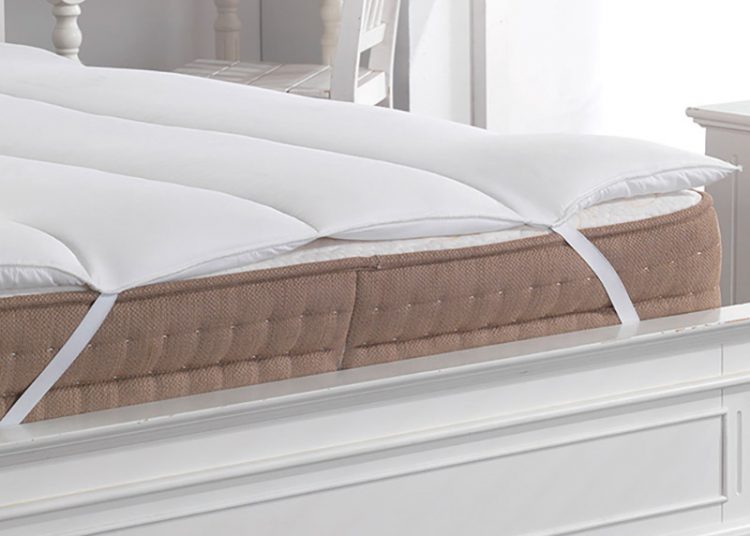
Ancient Greeks decorated their mattresses
The ancient Greeks mattresses were very similar to the Romans ‘mattresses, but the Greeks’ mattresses were better in terms of comfort. The Ancient Greeks, who slept on mattresses that looked like a modern sofa or divan, liked to decorate their mattresses with headboards. The ancient Greeks’ mattresses had unique sleeping surfaces. Thus, the mattresses of the Greeks had a wide range of uses, from lying down to sleeping.
Wealthy Greeks had more than one mattress and differed from ordinary citizens in this respect. Rich people had very elegant and luxurious mattresses in the ancient Greeks. The appearance of the mattresses, decorated with upholstery and precious materials, was extremely wonderful.
Far Eastern people preferred small mattresses to their small houses
Far Eastern People slept on mattresses on the floor for many years. Especially in Japan, the mattresses that were easily placed on the floor were extremely simple to use. Since it is simple to use, it was preferred in large numbers. Far Eastern people preferred these mattresses not only because they are easy to use but also because of their small size. Especially Japanese homes were very small, so the Japanese preferred more mattresses that were small and easy to store.
The Japanese, like other ancient people, used cotton for their mattresses. These mattresses used to clump over time. The Japanese used to fill their mattresses with long fiber cotton to prevent this.
The Chinese produced the Kang mattress
The first Chinese people slept on cotton mattresses like the Japanese. Chinese people have developed and advanced these types of mattresses after using them for a long time. The Chinese made out the kang mattresses, a large and high mattress made of clay and brick in the 11th century BC. Kang mattresses also had a warming effect in cold times because they were made of brick and clay.
In countries such as India, Pakistan, and Bangladesh, diwans were used. Divans were widely preferred as an alternative to simple cotton mattresses. Easily made sofas could have a more aesthetic appearance depending on the fibers and knitting types used. Another easy aspect of the sofas was that they were easily moved from house to house. For this reason alone, sofas were used frequently among people.
Decorated mattresses expressed wealth in the Middle Ages
When we look at the medieval times, most of the mattresses are of a simple construction. The mattresses are usually filled with straw or similar items. In addition, their mattresses are wooden. Poor citizens during this period typically slept in their bed box and high above the ground. They slept on piles of hay or straw laid on the floor.
During this period, it didn’t take until the 12th century for mattresses to become more decorative. Some wealthy people are surrounded by mattresses; They were decorated with intricate carvings and embroidery with pictures. These decorations reflected the wealth of wealthy people. Feather-filled mattresses became more popular in the second half of the Middle Ages and became accessible to most people.
Distinguished people set the fashion for mattresses
Distinguished people set the fashion for mattresses. Curtains hung around the mattresses were fairly standard practice for lords and ladies. These decorations started to be used by the public over time. The public began to hang curtains around their mattresses to prevent drafts and pests. The curtains made out a layer of secrecy when many people slept on the same mattress, and this was loved by the public.
Mattresses were decorated and grew in the Renaissance Period
Mattresses from the Renaissance period were highly decorated and detailed compared to mattresses in the early history. Under the mattress, a new style of wooden capitals with two columns was developed in 15th century Western Europe. This structure made out a large and good view with the curtains covering 4 sides of the mattress. On these mattresses, which are larger than normal mattresses, 7 or 8 people could sleep at the same time.
Mattress designs became much more detailed in the 16th century. It reached its best point in the 17th and 18th centuries. Wealthy families still regarded mattresses as a symbol of wealth during this period. The sizes of the mattresses grew even more, and wealthy people added even more expensive curtains to their four post mattresses. They continued to decorate their mattresses in an extremely ostentatious way.
Mattresses were produced collectively in the Modern Age
When societies entered the 19th century, mattresses changed like everything else in the world. Almost all of the old style mattresses are out of date. Box springs were produced to reduce mattress movements and to prevent lumps in the mattress. Wooden frames were not used with the emergence of the industrial age . People chose to use metal circles. Mattress types started to be produced collectively at the beginning of the 20th century. After the mattresses were produced collectively, they easily reached almost all kinds of mattresses in the society.
Heinrich Westphal produced spring mattresses, James Marshall produced pocket coils for the first time in history
Mattresses have great changes in modern times. The most striking of these changes was the introduction of spring mattresses by Heinrich Westphal in 1871. James Marshall made another important change in 1900. Marshall made a major contribution to the mattress industry by inventing pocket coils.
John Boyd invented latex foam, E.A. Murphy developed it
Change and development in the mattress industry continued at a great pace in the 20th century. These developments made out new mattress options. Latex foam, a very different mattress material of its time, was invented by John Boyd. One of the scientists of the period, E.A. With Murphy’s contribution, latex foam was developed and the first latex mattress was produced in 1931.
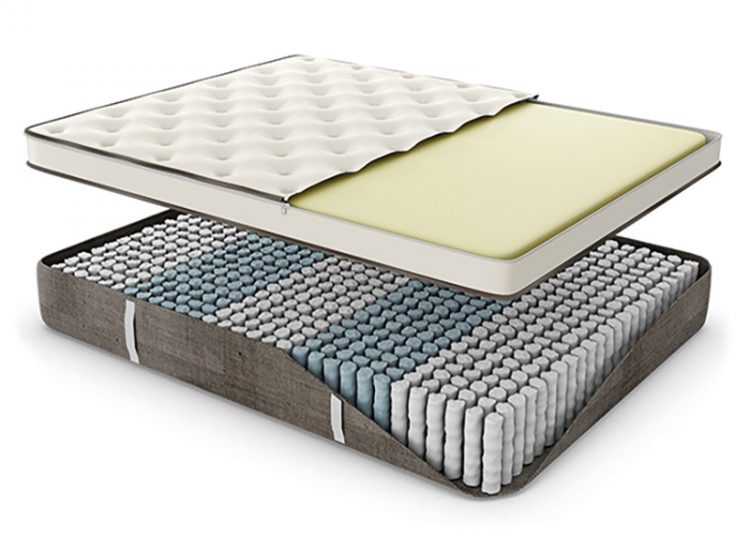
Manufacturers preferred polyurethane to natural latexin
Another important development in the mattress industry is the production of polyurethane foam. Although polyurethane foam is a synthetic product that smells bad, it made the production very cheaper. For this reason, it was preferred more by the manufacturers. Polyurethane was used more than natural latex in a short time.
Memory foam, an inexpensive alternative, launched by manufacturers
The use of polyurethane was very common until 1970. After the production of memory foam, which is a type of polyurethane foam, by scientists in 1970, the use of polyurethane decreased. Memory foam was marketed as a new sleeping product in the first years of its production. It was used by many Americans as an alternative product. Memory foam also became popular in the 1970s for its affordable price.
After losing interest in the second half of the 20th century, latex foam became popular again after consumers clearly knew that it was healthier and more environmentally friendly. The latex foam, which provides a healthy sleep, has gained the attention of people again.
History repeats itself in the mattress industry
When we look at world history, old trends in different fields can become popular again, as in fashion and music. Over the past thirty years, the Western World has generally preferred for larger and plush mattress styles. In addition to these preferences, it is seen that many people are attracted to more minimal and simple mattresses recently.
There have been many changes in low mattress frames from the past to the present, from simple layers to materials. Almost every passing time we witnessed a new development and change. After all these developments, people’s interest in old-style products has increased considerably recently. We have a wide variety of options, from popular to less preferred mattresses. The mattress industry has come up to the present day by being influenced by every age and every culture. This diversity in the mattress industry, which has so many different products, is a great chance for all of us.
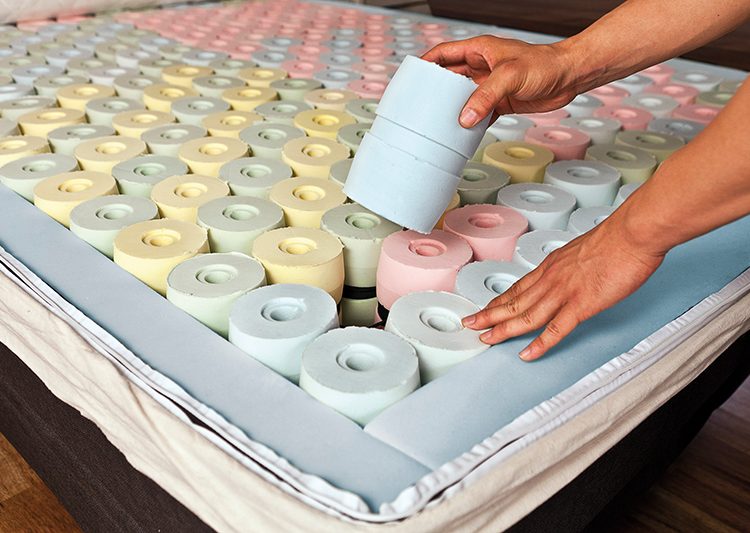
Geçmişten günümüze yatakların gelişimi
İnsanlar, hayatlarının ortalama olarak 227.760 saatini ve 26 yılını uyuyarak geçirirler. Günümüz dünyasında, uyuma sürecimizin dışında da yataklarda geçmişe göre daha fazla zaman harcıyruz. Bu durumun oluşmasındaki en büyük unsur ise yatakların, eski zamanlara kıyasla daha modern bir yapıya sahip olması. Peki geçmişteki yataklar nasıldı? ilk insanlar ne tür yataklarda yatıyorlardı veya hangi çeşit yataklarda yatmak zorunda kalıyorlardı? İlk dönemlere baktığımızda, yatakların şimdiki gibi olmadıklarını tahmin edebiliriz. Bu nedenle insanlar, her dönem için farklı yataklar tasarlamaya çalıştılar. Gerek şartlar gerekse de isteklerine göre farklı yatakları tercih ettiler. Hadi hep birlikte, farklı dönemlerdeki insanların yatak kullanımına, yatakların özelliklerine ve yatak üretimindeki buluşlara göz atalım.
Uygar insan ateşi bulduktan sonra yerde yatmaya başladı
Uygar insandan önce şempanze benzeri hayvan türleri, yırtıcı hayvanlardan korunmak için ağaçların tepelerinde uyumaya çalışıyorlardı. Uyuma alışkanlığı bir zorunluluğa göre değişim gösteriyordu. Ateşin bulunmasından sonra, bu durum belirli ölçülerde değişti. Ateşin keşfedilmesinin ardından, vahşi hayvanlar ateşin olduğu tarafa gelmiyordu. Bu nedenle ilk insanların, ateşin icadından sonra yerde uyumaya başladığı düşünülüyor. Tam da bu noktada, yatak ve uyuma alışkanlığının kökleri oluşmaya başlıyor.
Bir yatağın bilinen en eski şekli ise yaklaşık 77.000 yıl öncesine dayanıyor. Arkeologlar tarafından Güney Afrika’da bulunan kaya sığınaklarından keşfedilen bu bilgi, eski insanların yatak şekilleri hakkında bilgler sunuyor. Bu yataklar, sivrisinek ve böceklerden korunmak için doğal böcek kovucu özelliğine sahip olan bazı ot ve yapraklardan oluşmaktaydı.
Eski Mısırlılar, yükseltilmiş ve ahşap yatakları tercih ediyordu
Tarihin ilk zamanlarında, MÖ 3000 ile 1000 yılları arasında insanlar ve medeniyetler geliştikçe uyku ve uyuma şekilleri büyük ölçüde değişti. Eski Mısır’da, insanlar yılanlardan ve kemirgenleden korunmak için yükseltilmiş ve ahşap yatakları tercih ediyordu. Yükseltilmiş yataklar, sıcaklığı düzenleyip soğuk ve sıcaktan korunmaya yardımcı oluyordu. insanlar, bu yöntemi kullanarak daha faydalı bir uyku ve daha kalitei bir yatağa sahip oluyorlardı.
Mısırlıların ahşap ağaçları daha fazla tercih etmesinin ardından, ahşap ağaçların bölgede yetişmemesinden dolayı devlet tarafından ahşap ağaç ithal edilmesine izin verildi. Ahşap, o dönemde ihtişamsız yataklar için tercih edilen bir malzemeydi. Dönemin varlıklı insanları, daha fazla konfor için ahşap yastık, keten çarşaflar, altın, mücevherler ve abanozla süslenmiş yatakları kullanıyorlardı.
Romalılarda halk saman üzerinde, zenginler yünde uyuyorlardı
İlk Romalılar, Mısır’da yaşayan ilk insanlar gibi yataklarını yüksek yerlere kurdular. Bu nedenle yataklara ulaşmak için merdiven kullanmak gerekiyordu. Romalıların, yataklarının çoğu ahşap, metal veya fildişinden yapılıyordu. Çeşitli elbiseler ve iplerle süslemeler yaparak yataklarını daha iyi bir görünüşe getirmek istiyorlardı. Halk için yataklar, samandan oluşurken zengin Romalılar için durum farklıydı. Zengin Romalıların yatakları, yün veya tüy gibi daha lüks malzemelerden oluşan çok sayıda katmana sahipti.
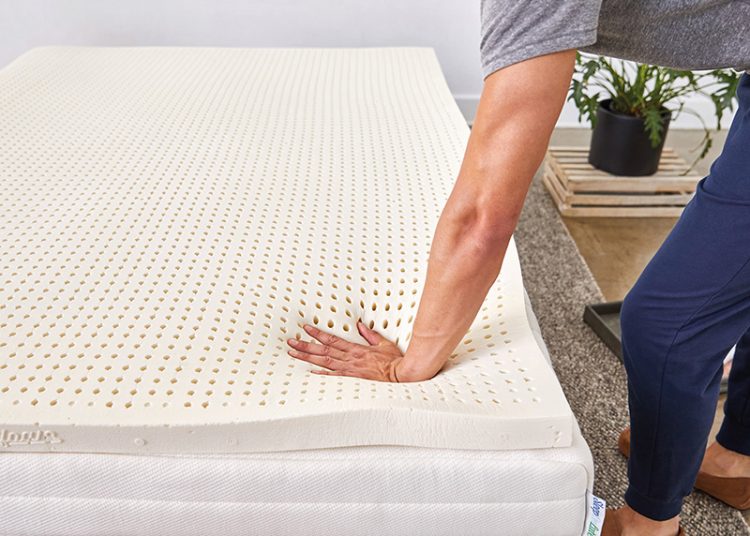
Eski Yunanlılar, yataklarını süslüyorlardı
Eski Yunanlılar, Roma’dakilere epey benzer ama konfor yönünden daha etkin yataklarda uyuyorlardı. Modern bir kanape veya divan gibi görünüşe sahip olan yataklarda uyuyan Eski Yunanlılar, yataklarını başlıklarla süslemeyi de seviyorlardı. Eski Yunanlıların yatakları benzersiz uyku yüzeyleriyle uzanmaktan ve uyumaya kadar çok geniş bir kullanım alanına sahipti.
Varlıklı Yunanlılar, birden fazla yatağa sahiplerdi ve bu yönleriyle sıradan vatandaşlardan ayrılıyorlardı. Eski Yunanlılarda, zengin insanların sahip olduğu yataklar oldukça lüks bir yapıya sahipti. Etrafı döşemeler ve değerli malzemelerle dekore edilmiş yatakların görünüşü son derece dikkat çekiciydi.
Uzak Doğulu insanlar küçük evlerine, küçük yatak seçiyordu
Uzak Doğulu İnsanlar, uzun yıllar boyunca doğrudan yere serilmiş yataklarda uyudu. Özellikle Japonya’da, zemine kolayca yerleştirilen yatakların kullanımı son derece basitti. Kullanımı basit olduğu için çok fazla sayıda tercih ediliyordu. Doğu insanları, bu yatakları sadece kolay kullanım sağladığı için değil, evlerinin yapısının küçük olmasından dolayı da kullanıyorlardı. Özellikle Japon evleri, çok küçük bir yapıya sahip olduğundan dolayı Japonlar, küçük ve kolayca saklanabilecek yatakları daha fazla seçiyorlardı.
Diğer eski kültürlerde olduğu gibi Japonlar da yatakları için pamuk kullanıyorlardı. Kullandıkları bu yataklar, kullanıldıkça topaklanabiliyorlardı. Bu durumu önlemek için de yataklarını uzun elyaf pamukla doldurmayı tercih ediyorlardı.
Çinliler Kang yatağını üretti
Japonya’da olduğu gibi, ilk Çinli insanlar da pamuklu yataklarda uyuyorlardı. Çinli insanlar, bu yatak türlerini uzun süre kullandıktan sonra geliştirip ileri bir seviyeye taşıdılar. Çinliler, MÖ 11. Yüzyılda kilden ve tuğladan yapılmış büyük ve yüksek bir yatak olan kang yataklarını oluşturdular. Kang yatakları, tuğla ve kilden yapıldığı için soğuk olan zamanlarda ısıtıcı gibi bir etkiye de sahipti.
Hindistan, Pakistan ve Bangladeş gibi yerlerde ise divanlar kullanılıyordu. Divanlar, basit pamuklu yataklara alternatif olarak yaygın bir biçimde tercih ediliyordu. Yapım açısından oldukça basit olan divanlar, kullanılan lifler ve örgü türlerine bağlı olarak daha estetik bir görünüşe sahip olabiliyordu. Divanların bir diğer kolay yanı ise basit bir şekilde bir evden diğerine taşınmasıydı. Sırf bu nedenden dolayı bile divanlar, insanlar arasında sıksıkla kullanılmıştır.
Orta Çağ’da süslemeli yataklar zenginlik göstergesiydi
Orta Çağ zamanına baktığımızda, yatakların çoğu basit bir yapıdadır. Yatakların içerisi genellikle saman veya benzeri maddelerle doldurulmuştur ve bu yatakların şilteleri ahşaptır. Bu dönemdeki yoksul vatandaşlar ise tipik olarak yatak kutusu denen yerden yüksek yerlerde zemine serilmiş saman veya saman yığınlarının üzerinde uyuyorlardı.
Bu dönemde, yatakların daha dekoratif hale gelmesi 12. yüzyıla kadar sürmedi. Bazı varlıklı insanlar yatak çevrelerini; karmaşık oymalar ve resimlerle hazırlanmış işlemelerle süslemişlerdir. Bu süslemeler, varlıklı insanların zenginlik göstergesi olmuştur. Orta Çağ döneminin ikinci yarısına geldiğimizde kuş tüyü ile doldurulan yataklar daha popüler olmuştur ve çoğu insan tarafından ulaşılabilir bir hale gelmiştir.
Seçkinler modayı belirliyordu
Seçkinler, konu yatak olduğunda modayı belirleyen insanlardı. Lordlar ve hanımefendiler için standart bir uygulama olan yatakların etrafına asılan perdeler, zamanla halk tarafından da kullanılmaya başlandı. Halk, hava akımlarını ve zararlı hayvanları önlemek için yataklarının etrafına perdeler asmaya başladı. Perdeler, birçok insanın aynı yatak üzerinde uyumasıyla gizlilik katmanı oluşturuyordu ve bu durum halk tarafından hoş karşılanıyordu.
Rönesans Dönemi’nde yataklar süslendi ve büyüdü
Rönesans dönemindeki yataklar, tarihin ilk zamanlarına göre oldukça süslü ve ayrıntılı bir hale gelmişlerdir. 15. yüzyıl Batı Avrupa’sında, yatağın dibinde olacak şekilde iki sütunlu ahşap başlıklardan oluşan yeni bir tarz geliştirildi. Bu yapı, yatağın 4 bir yanını kaplayan perdelerle büyük ve iyi bir görüntü oluşturuyordu. Normal yataklardan daha büyük olan bu yataklarda, 7 veya 8 kişi aynı anda uyuyabiliyordu.
Yatak tasarımları, 16. yüzyılda çok daha ayrıntılı bir hale geldi. 17. ve 18. yüzyılda ise zirveye ulaştı. Varlıklı ailelerin, bu dönemde de yataklara bakıç açısı değişmedi ve yatakları zenginlik sembolü olarak görmeyi sürdürdüler. Bu sebeple, yatakların boyutları daha da büyüdü ve zenginler, dört direkli yataklarına daha da pahalı perdeler ekledi. Son derece gösterişli bir şekilde yataklarını süslemeye devam ettiler.
Modern Çağ’da yataklar toplu üretilmeye başlandı
Toplumlar, 19. yüzyıla girdiğinde, dünyadaki her şey gibi yatak seçimlerinde de ciddi farklılıklar oldu. Eski tip yatak modellerinin neredeyse hepsinin modası geçti. Yatak hareketlerini azaltmak ve şilte içerisindeki topakları önlemek için kutu yaylar piyasaya sürüldü. Sanayi çağının patlamasıyla birlikte ahşap çerçeveler yerini metal çerçevelere bıraktı. 20. yüzyılın başlarına geldiğimizde ise şilteler ve yatak modelleri toplu olarak üretilmeye başlandı. Bu nedenle toplumdaki hemen hemen herkes, kolay bir şekilde her türlü yatak modellerine ulaşabildi.
Tarihte ilk kez Heinrich Westphal yaylı yatakları, James Marshall cep bobinlerini üretti
Modern dönem içerisinde de yataklar büyük değişikliklere uğradı. Bu gelişmelerden en dikkat çekici olanı ise 1871 yılında Heinrich Westphal tarafından, yaylı yatakların piyasaya sürülmesiydi. 1900 senesine geldiğimizde ise bir başka önemli değişime imza atan isim James Marshall olmuştur. Marshall, cep bobinlerini icat ederek yatak sektörüne büyük bir katkı sağlamıştır.
John Boyd lateks köpüğünü icat etti, E.A. Murphy geliştirdi
Yatak sektöründe değişme ve gelişme 20. yüzyılda büyük bir hızla devam etti. Bu gelişmeler, yeni bir yatak ve yatak seçenekleri çağını başlattı. John Boyd tarafından, zamanına göre çok farklı bir yatak malzemesi olan lateks köpük icat edildi. Dönemin bilim insanlarından E.A. Murphy’nin katkılarıyla, lateks köpük geliştirildi ve 1931 yılında ilk lateks yatak üretildi.
Doğal lateksin yerini poliüretan aldı
Yatak endüstrisindeki bir diğer önemli gelişme ise poliüretan köpüğün üretilmesidir. Poliüretan köpük, kötü kokan sentetik bir ürün olmasına rağmen üretimi çok büyük ölçüde ucuzlattığı için birçok üretici tarafından tercih edilmiştir. Poliüretan, büyük bir hızla doğal lateksin yerini almıştır.
Ucuz bir alternatif olan hafızalı köpük üretildi
Kısa süre içerisinde poliüretan kullanımı çok büyük bir yaygınlık gösterdi fakat 1970 senesinde, bilim insanları tarafından yine bir tür poliüretan köpük olan hafızalı köpük üretildi. Hafızalı köpük, üretildiği ilk yıllarda yeni bir uyku ürünü olarak pazarlandı. Birçok Ameikalı için ortak bir seçenek haline gelen ürün, ucuz bir alternatif olarak göze çarptı.
- yüzyıın ikinci yarısında gözden düşün lateks köpüğü, tüketicilerin daha sağlıklı ve çevre dostu olduğunu net olarak bilmesinin ardından tekrar popüler oldu. Sağlıklı bir uyku ortamı yaratan lateks köpüğü, tekrardan insanların ilgisini kazandı.
Yatak sektöründe de tarih tekerrür ediyor
Dünya tarihine baktığımızda, moda ve müzikte olduğu gibi eski trendler yeniden popüler olabiliyor. Geçtiğimiz otuz yıl içerisinde, Batı dünyası genellikle daha büyük ve pelüş yatak tarzlarını tercih etmişlerdir. Bu tercihlerin yanında, birçok insanın daha minimal ve basit yataklara karşı ilgisinin gözle görülür bir seviyede arttığına dair işaretler vardır.
Geçmişten günümüze düşük yatak çerçevelerinde, basit katmanlardan malzemelere kadar birçok değişiklik oldu. Neredeyse her geçen zaman yeni bir gelişme ve değişmeye şahit olduk. Bütün bu gelişmelerin ardından, son dönemlerde insanların eski tip ürünlere karşı ilgisi bir hayli yükseldi. Popüler olandan, daha az tercih edilen yataklara kadar çok fazla seçeneğe sahibiz. Her çağdan ve her kültürden etkilenerek günümüze kadar ulaşmış yatak sektöründe, hangi tip ürünü istersek bulabiliyor olmamız hepimiz adına büyük bir şans.
Editor
Ethem Sündük | [email protected]


